Discover Sicily's most Active Volcanoes
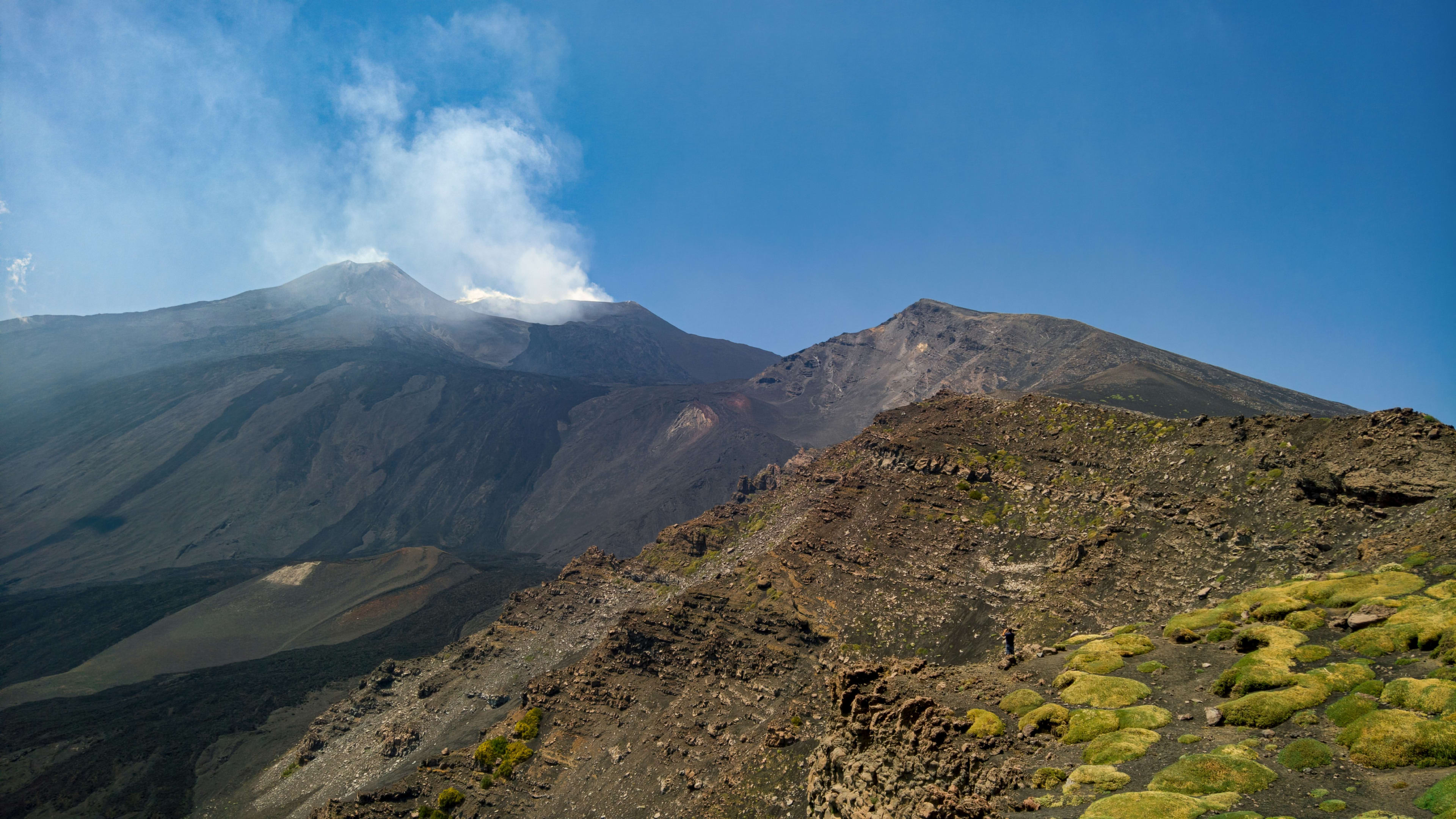
Known as the land of water and fire, Sicily is the island with the biggest number of active volcanoes in Italy and the Mediterranean. Mount Etna, Vulcano and Stromboli welcome you to breathtaking landscapes, unparalleled views, fascinating stories and thrilling excursions immersed in nature. Read on to discover Sicily’s most active volcanoes!
Sicily is the largest island in the Mediterranean and is located in Southern Italy. Known for its rich history, unique landscapes and delicious food, Sicily is also renowned for its dynamic volcanic activity. Volcanoes have shaped the Sicilian landscape and its cultural development, gifting the world with incredible myths, legends and spectacular flora.
Sicily counts around 26 volcanoes, situated on the main island and its archipelagoes. Most volcanoes are dormant or inactive, like Lipari Island, part of the Aeolian Islands, off Sicily’s northern coast. Some other volcanoes show secondary volcanic activity, such as Pantelleria Island, off Sicily’s southern coast, near Tunisia. This means that Pantelleria doesn’t perform eruptions, but minimum volcanic activity like hot springs and smokes.
Sicily is also home to some famous volcanoes, known for their vibrant volcanic activity attracting visitors from all around the world: Mount Etna, Stromboli and Vulcano. These are Sicily’s most active volcanoes and have marked the history and culture of the island indelibly, offering majestic landscapes and the ideal setting for incredible adventures you can cherish forever.
This article delves into the thrilling world of Sicily’s most active volcanoes, exploring their history, and characteristics and showing the best way to visit them safely all year round.
1. Vulcano
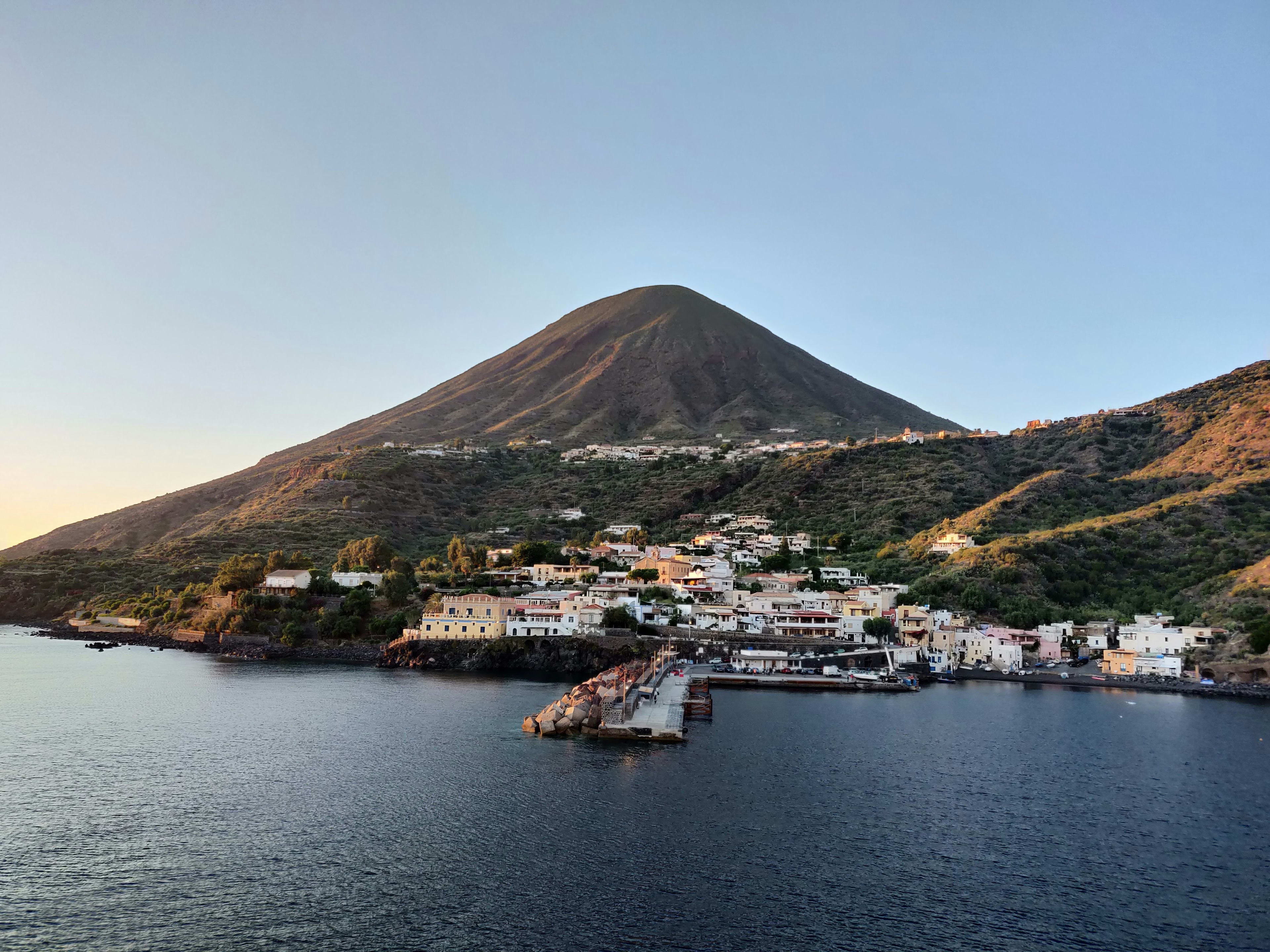
Vulcano is one of the 7 islands in the Aeolian archipelago, located off Sicily’s northern coast. The island gave its name to all volcanoes, derived from Vulcan, the Roman god of fire, who was believed to live inside the volcano.
The volcano rises in the centre of the island, near Porto Levante, the main port of Vulcano Island and is visible kilometres away from the coast. Vulcano is covered in lush greenery at the bottom, creating a scenic and magical atmosphere for hiking lovers. The vegetation decreases as the altitude progresses, making the crater look like a rocky desert. Vulcano’s flanks show residues of sand, pumice and obsidian, creating a colourful landscape you’ll hardly find anywhere else.
Vulcano is the perfect example of a stratovolcano because is composed of several overlapping volcanic layers. The main crater of the volcano is called Gran Cratere, which means “big crater” in Italian. The volcano is 386 m (1266 ft) high, making it the shortest of Sicily’s most active volcanoes.
The last major eruption occurred in 1890, known for its explosive activity and pyroclastic flows. Even if the volcano doesn’t erupt as often as Stromboli and Mount Etna, it still shows volcanic activity. Fumarolic activity continues at Gran Cratere, allowing visitors to admire steam and volcanic gases. The island's geothermal activity includes hot springs, appreciated by the locals and visitors seeking wellness and relaxation.
Due to its fascinating volcanic activity, Vulcano has inspired numerous myths, marking Sicily’s culture forever. In Roman mythology, Vulcano was believed to be the house of Vulcan, the god of fire. According to the myth, Vulcan was producing weapons for all the gods inside the volcano.
You can easily reach Volcano Island by ferry from Sicily and hike around the island. Hiking on Volcano Island with a guide is a unique outdoor experience, immersed in nature and surrounded by fascinating history and myths. If you wish to explore Vulcano Island and get panoramic views of the volcano, you cannot miss this guided hiking tour up Vulcano! With a certified guide, you’ll learn about the geology and mythology of the island.
2. Stromboli
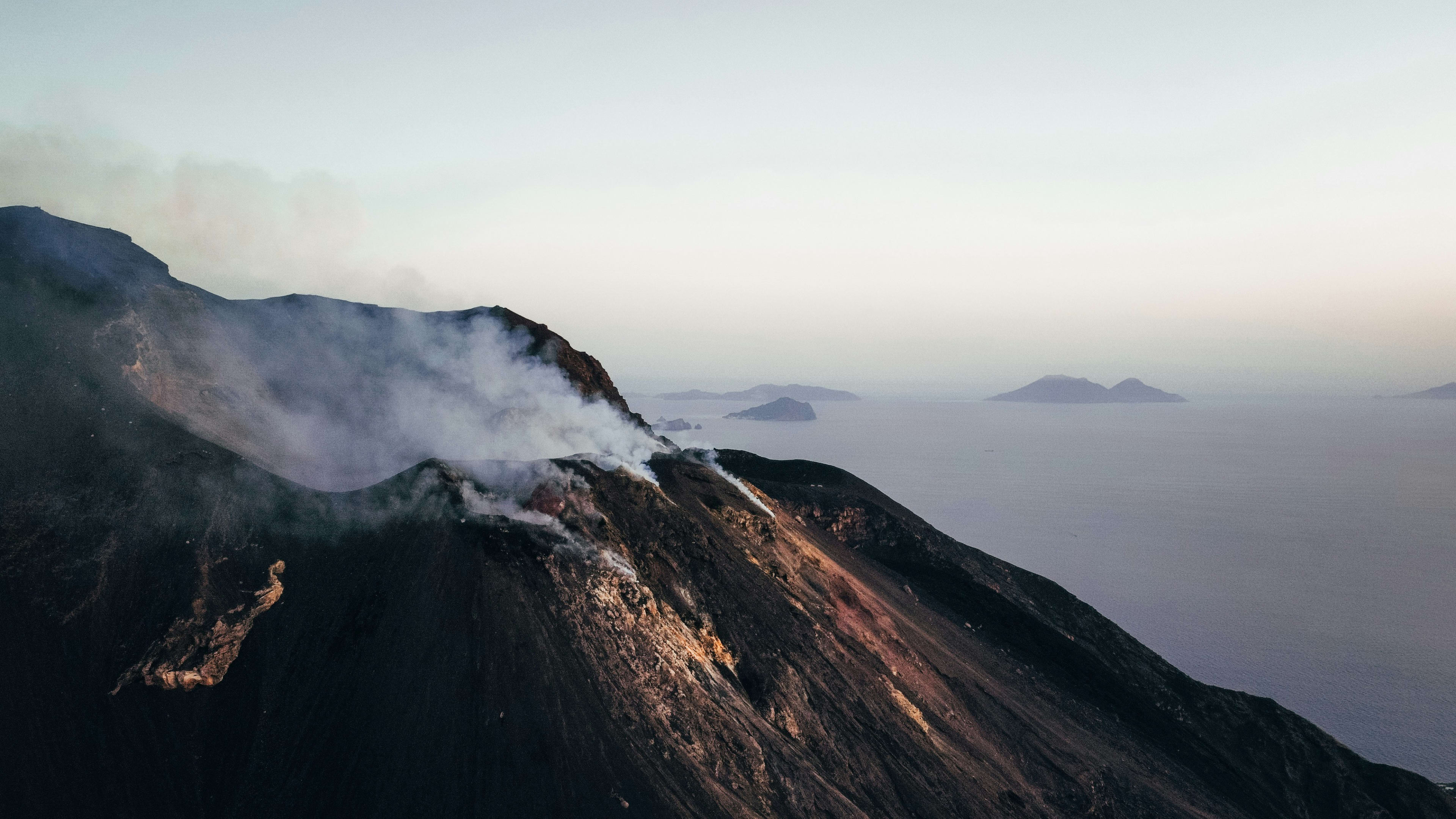
Second, on Sicily’s most active volcanoes list, we find Stromboli. The volcano is also part of the Aeolian Islands like Vulcano and it’s located off Sicily’s northern coast. Unlike its neighbour, Stromboli is one of Earth’s most continuously active volcanoes. Due to its unique and explosive volcanic activity, Stromboli is also called the "Lighthouse of the Mediterranean". Stromboli's eruptions present regular, mild explosive activity, making it the most alarming volcano among Sicily’s most active volcanoes.
Stromboli's volcanic activity is almost constant, with minor eruptions occurring every 15 to 20 minutes. During these frequent eruptions, it is very likely to watch incandescent cinders, lapilli, and lava bombs falling around the crater area.
One of the unique features of Stromboli is the “Sciara del Fuoco” (Stream of Fire), a large depression on the northwest side of the volcano. This feature channels lava flows directly into the sea, creating sensational steam explosions when the hot lava interacts with the water.
Even though Stromboli’s volcanic activity is constant and quite impressive, people still live on the island. Stromboli’s inhabitants have developed a deep understanding of the volcano's behaviour, allowing them to live safely despite the ongoing eruptions. The island's population is small and mostly concentrated welcoming tourists and adventurous travellers to learn about the island and the volcano.
It is no surprise that Stromboli is one of the most visited islands of the Aeolian group. Visitors are drawn to Stromboli for the unique experience of witnessing its eruptions. Most travellers like to spend the night in Stromboli, hoping to see the volcano erupting during the night and admire the fiery display against the dark sky. You can also join a guided sunset hiking excursion on Stromboli and take your chance to admire the volcano erupting in complete safety!
Being one of Sicily’s most active volcanoes, Stromboli has fascinated people for centuries and inspired literature and film. It was the setting for the 1950 movie "Stromboli," directed by Roberto Rossellini and starring Ingrid Bergman, which brought international attention to the island.
3. Mount Etna
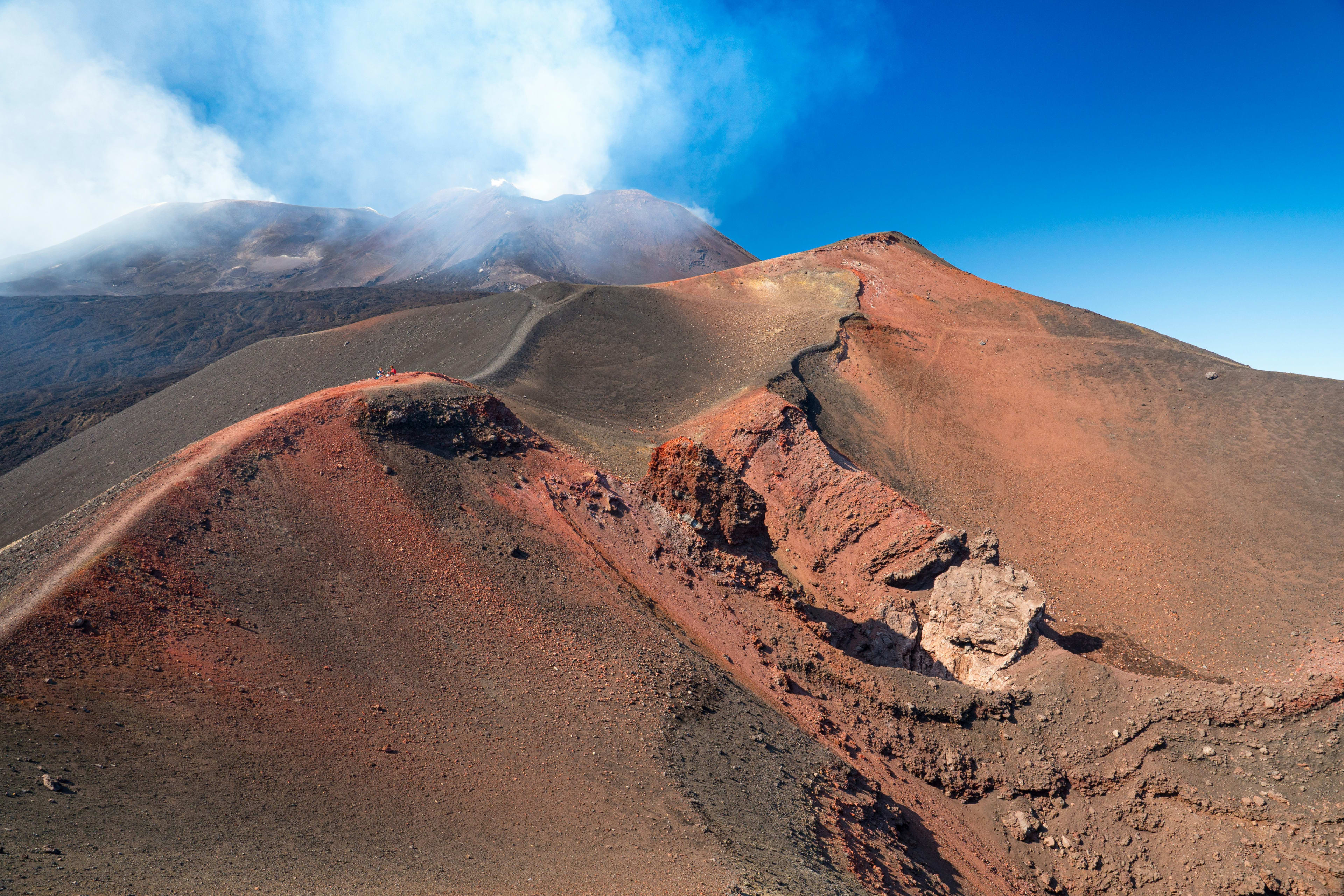
Known for its intense and extraordinary volcanic activity, Mount Etna is Sicily’s most active volcano. Located on Sicily’s eastern coast, near Catania, Mount Etna towers at approximately 3,329 m (10,922 ft). Its height varies due to frequent eruptions and subsequent changes in its structure.
Mount Etna's eruptions are fascinating from a geological point of view since they are both effusive (lava flows) and explosive activity. The volcano's complex structure includes several summit craters and numerous caves accessible from its flanks. The frequent eruptions have created a diverse landscape of craters, lava fields, and ash deposits, making Etna one of the most studied volcanoes in the world.
Etna's persistent activity is almost continuous, with major eruptions occurring frequently. The oldest eruption dates back to around 500,000 years ago. One of the most significant eruptions in recent history was in 1669, which produced massive lava flows that reached the city of Catania. More recent eruptions, such as those in 2001, 2002-2003, and 2018, have reshaped the landscape and provided valuable data for volcanologists.
The fertile volcanic soils of Mount Etna support extensive agriculture, particularly vineyards, orchards, and farms. The volcanic soil, rich in minerals, produces high-quality wine, citrus fruits, and olives, which are key to the local economy.
Mount Etna holds a special place in Sicilian culture and mythology. Mount Etna’s influence on Sicily’s culture is so strong, that the locals call the volcano “Her Majesty” or “Mother Etna”. The ancient Greeks believed it to be the forge of Hephaestus, the god of fire and blacksmiths. Today, Etna is a UNESCO World Heritage Site, appreciated for its geological significance and cultural heritage. Going all around the volcano there’s one of Italy’s most important regional parks, Parco dell’Etna. There, you can join incredible guided hiking tours on Mount Etna and learn everything about the volcano.
Is it safe to visit an active volcano in Sicily?
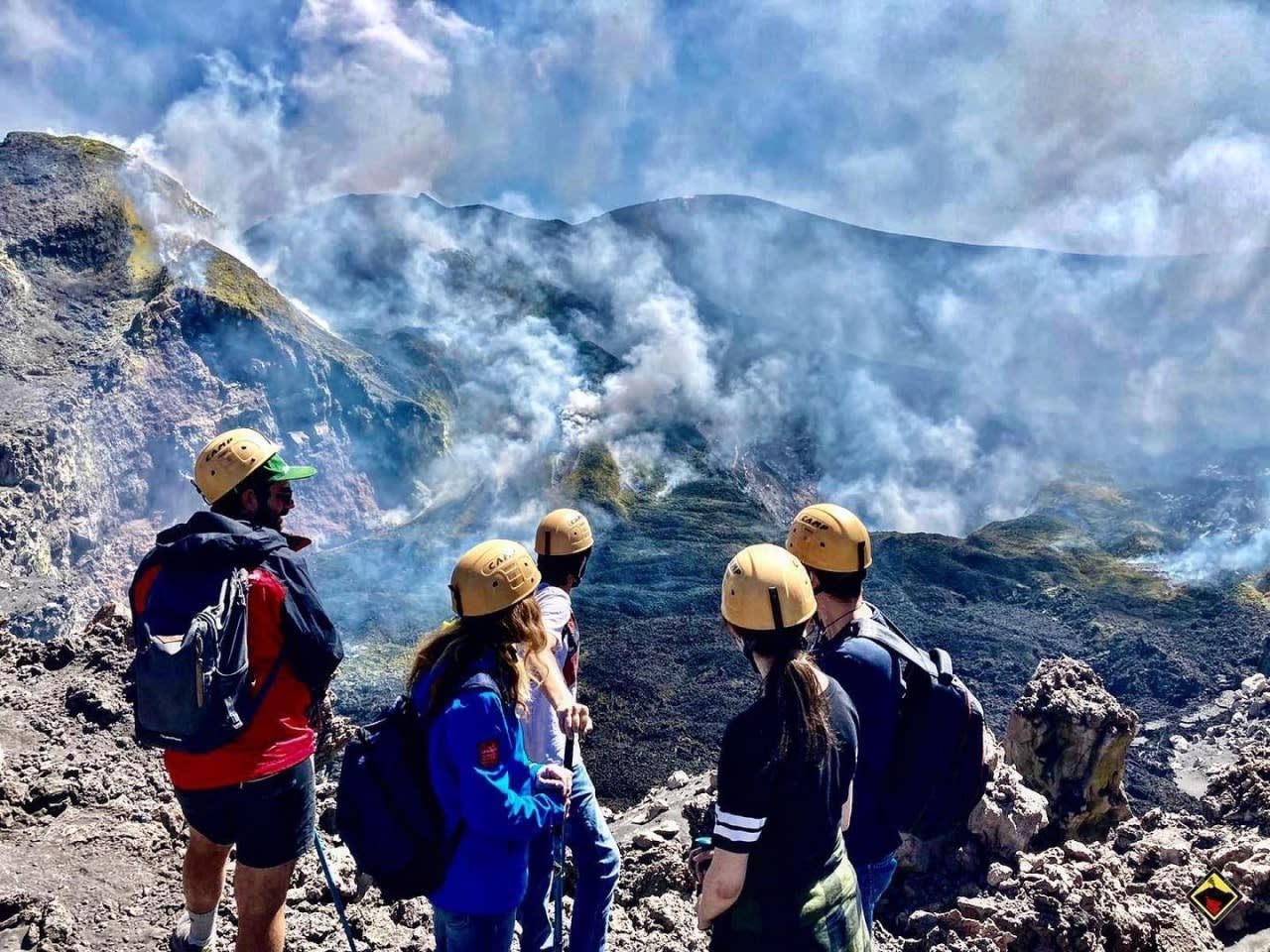
Hiking on an active volcano can be a thrilling and yet risky adventure. The safety of a hiking tour on one of Sicily’s active volcanoes depends on several factors, including the current level of volcanic activity and weather conditions. Active volcanoes can unpredictably emit toxic gases and ash. However, with proper precautions, the risk can be managed and hiking on an active volcano in Sicily will be safe and memorable. Hiking on a volcano with a guide offers numerous advantages such as safety and the overall experience. Guides provide enriching information about the volcano's geology, history, and ecology. Their knowledgeable experience allows them to handle emergencies efficiently, offering safety to inexperienced visitors. By hiking with a guide, you also gain access to off-the-beaten-path trails and spectacular viewpoints. Additionally, equipping yourself with appropriate clothes and shoes is fundamental.
What to wear on a volcano hike?
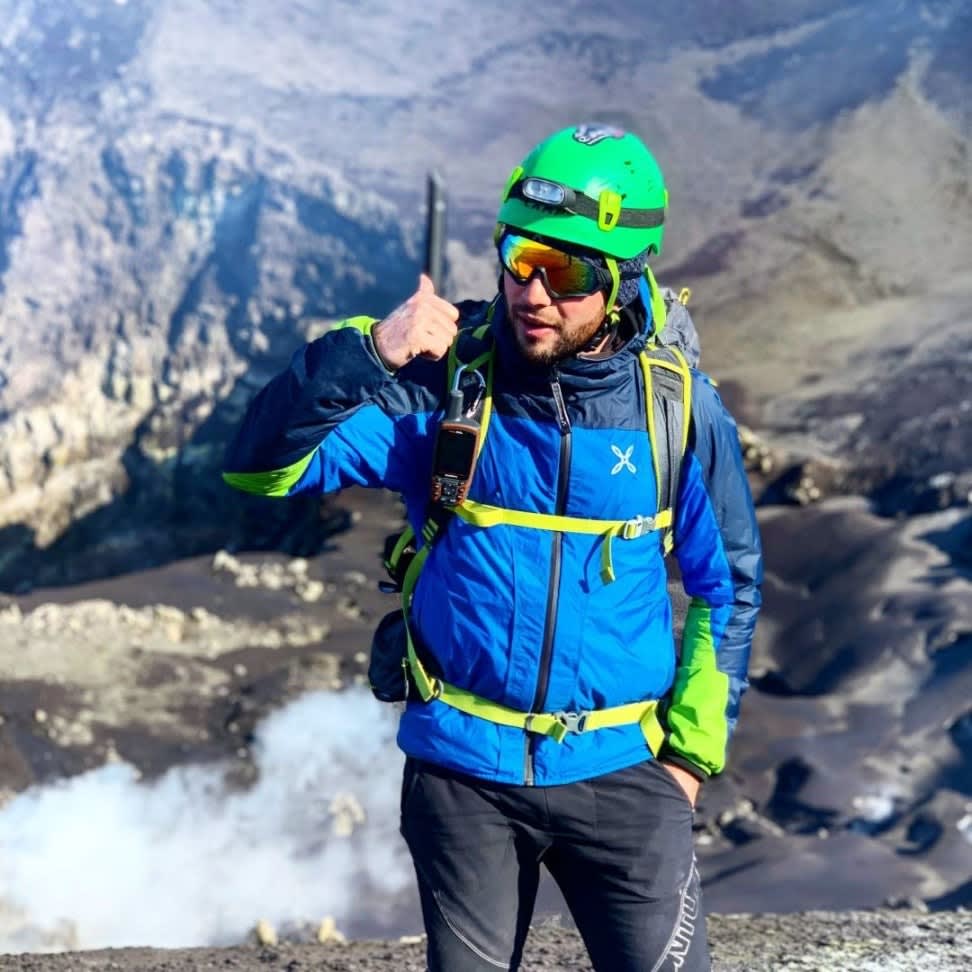
When embarking on a volcano hike, dressing properly is key. Wearing layers of clothes is the best way to approach your adventure, allowing you to adjust to the temperature and the environment as you hike. Start with a moisture-wicking base to keep you dry and wear a breathable and quick-drying shirt. Top everything with a windbreaker or a lightweight jacket to protect yourself against temperature drops and strong winds. A sturdy pair of hiking pants will keep you comfortable and protected from any type of terrain, such as volcanic rocks and bushes. Your hiking boots must offer strong ankle support and excellent grip, perfect for navigating rugged lava deserts and slippery paths. Protecting your head and eyes from intense sun exposure with a hat and UV-protective sunglasses is fundamental on a volcano hike. Your backpack should be spacious, but not heavy. Only pack the essentials: water, high-energy snacks, sunscreen and your camera. Remember to bring a bandana, you’ll need it in case of some ashes or gas ejections. This thoughtful preparation will ensure a safe and memorable volcano hiking experience.
When is the best time to visit a volcano?
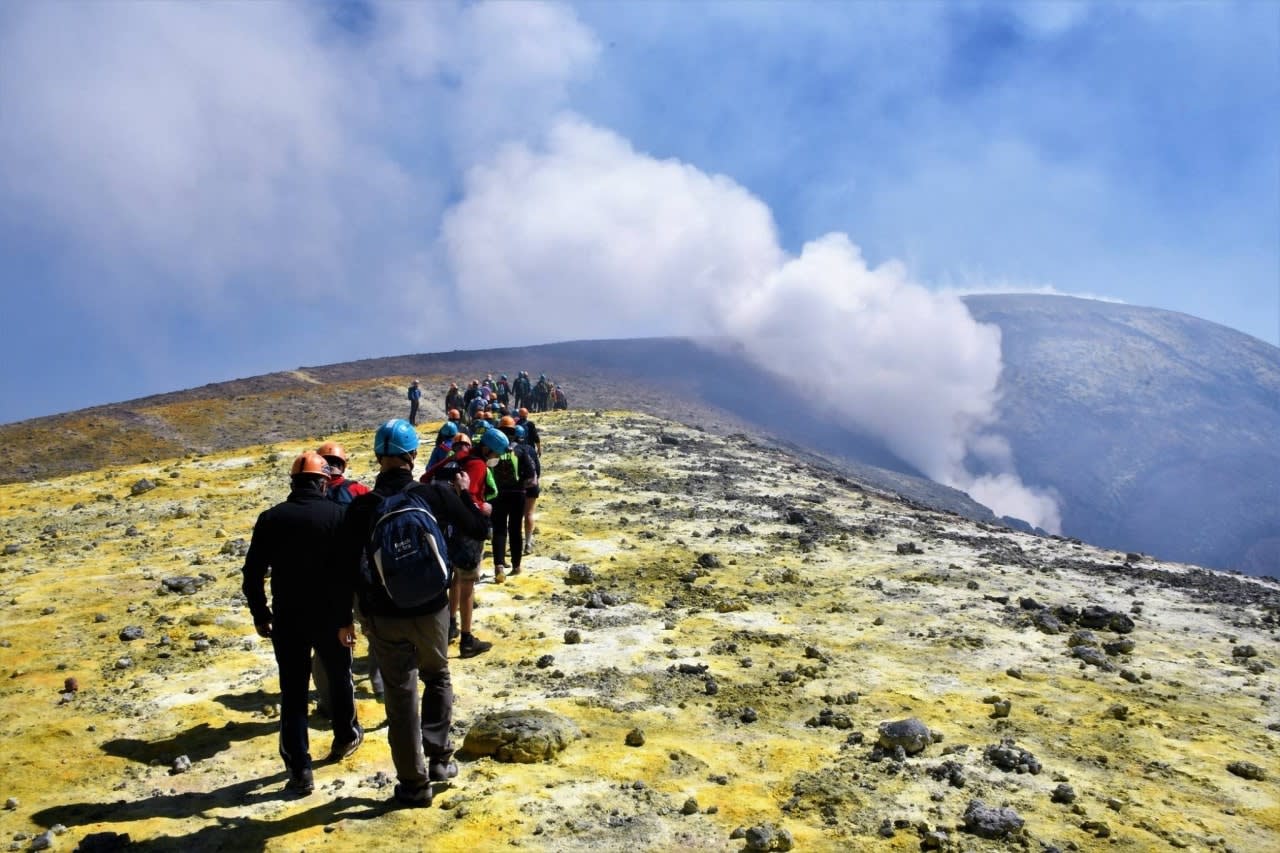
The best time to visit an active volcano in Sicily is spring (April to June) and autumn (September to November). These months of the year offer the best weather conditions with mild temperatures, making the hiking experience comfortable throughout the day. Moreover, during springtime, you’ll admire a vibrant scenery with blooming wildflowers and lush landscapes. During Autumn you’ll get clear skies and crisp air, ideal for panoramic views from land to sea. These seasons also see fewer tourists, allowing for a more tranquil and immersive experience. Guided hiking tours on Mount Etna operate all day, from the early morning until sunset. If you are an early bird, it is recommended to hike on a volcano in the morning. That’s when fewer visitors are hiking, gifting you with a unique experience and the refreshing morning air. On the other hand, if you are a romantic explorer, the best time to visit a volcano is at sunset. You’ll watch the sun setting from a special location and get incredible views of the sea as well!
Now all you have to do is plan your next adventure on one of Sicily's active volcanoes. Find out the best way to reach the island, thanks to our travel guide to Sicily. If you wish to visit Mount Etna this year, check out our article on the top activities to explore Sicily’s most active volcano!